I have created an application using Spring integrated Oauth2. I have my own custom login and authorize templates. After successfully authenticated it is redirecting to authorize .html where it asks for the user approval. The issue is that when I click even Approve or Deny button action is always DENIED like as shown in my table below
Also How can we enable REST based authentication and authorization using oauth2. I tried disabling the csrf for enabling users to do authentication and authorization but still didn't work.
Can anyone please help me on this.
You can download and see the Complete Application from here (Updated as per the last suggestion 19/11/2017)
UPDATE 1
As per the suggestion from @fateddy I have used Option 3 using the ApprovalStoreUserApprovalHandler. I have used the exact authorize.html given.
Lets say I am having two clients (client123 and client789) in my database.
Client client123 which does not have auto-approve enabled and the client client789 with auto-approve option enabled for openid scope.
Now the problem is that I am getting the below exception for client123 when I click the approve button.
error="invalid_client", error_description="Bad client credentials"
OAuth2Config.java is as given below
@Configuration
@EnableAuthorizationServer
public class OAuth2Config extends AuthorizationServerConfigurerAdapter {
@Autowired
private DataSource dataSource;
@Bean
public UserApprovalHandler userApprovalHandler() {
ApprovalStoreUserApprovalHandler userApprovalHandler= new ApprovalStoreUserApprovalHandler();
userApprovalHandler.setApprovalStore(approvalStore());
userApprovalHandler.setClientDetailsService(clientDetailsService());
userApprovalHandler.setRequestFactory(requestFactory());
return userApprovalHandler;
}
@Autowired
@Qualifier("authenticationManagerBean")
private AuthenticationManager authenticationManager;
@Bean
public DefaultOAuth2RequestFactory requestFactory(){
return new DefaultOAuth2RequestFactory(clientDetailsService());
}
@Bean
public ClientDetailsService clientDetailsService() {
return new JdbcClientDetailsService(dataSource);
}
@Bean
public ApprovalStore approvalStore() {
return new JdbcApprovalStore(dataSource);
}
@Bean
public TokenStore tokenStore() {
return new JdbcTokenStore(dataSource);
}
@Bean
public AuthorizationCodeServices authorizationCodeServices() {
return new JdbcAuthorizationCodeServices(dataSource);
}
@Override
public void configure(AuthorizationServerEndpointsConfigurer endpoints) throws Exception {
//endpoints.tokenStore(tokenStore());
// endpoints.approvalStore(approvalStore());
endpoints.userApprovalHandler(userApprovalHandler());
endpoints.authorizationCodeServices(authorizationCodeServices());
endpoints.authenticationManager(authenticationManager);
}
@Override
public void configure(ClientDetailsServiceConfigurer clients) throws Exception {
clients.jdbc(dataSource);
}
@Override
public void configure(AuthorizationServerSecurityConfigurer authorizationServerSecurityConfigurer) throws Exception {
authorizationServerSecurityConfigurer.tokenKeyAccess("permitAll()").checkTokenAccess("isAuthenticated()");
}
}
authorize.html
<html>
<head>
</head>
<body>
<div class="container">
<h2>Please Confirm</h2>
<p>
Do you authorize "${authorizationRequest.clientId}" at "${authorizationRequest.redirectUri}" to access your protected resources
with scope ${authorizationRequest.scope?join(", ")}.
</p>
<form id="confirmationForm" name="confirmationForm" action="/auth/oauth/authorize" method="post">
<input name="scope.openid" value="true" type="checkbox" /> Read<br>
<button class="btn btn-primary" type="submit">Approve</button>
</form>
</div>
</body>
</html>
